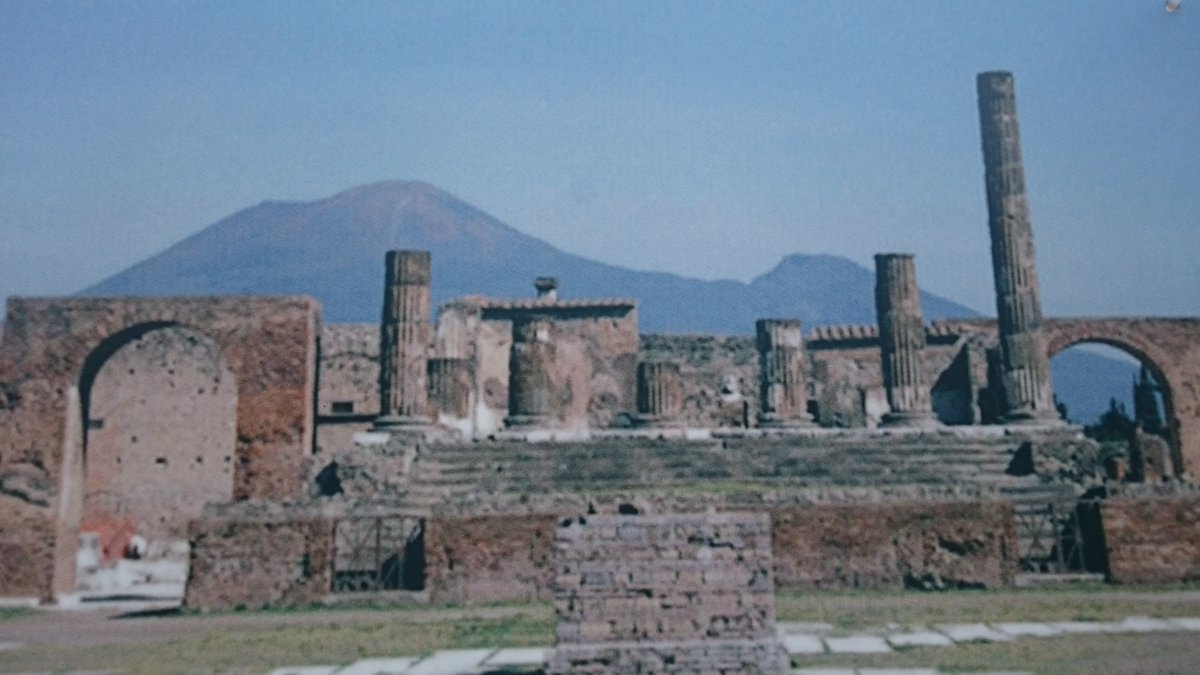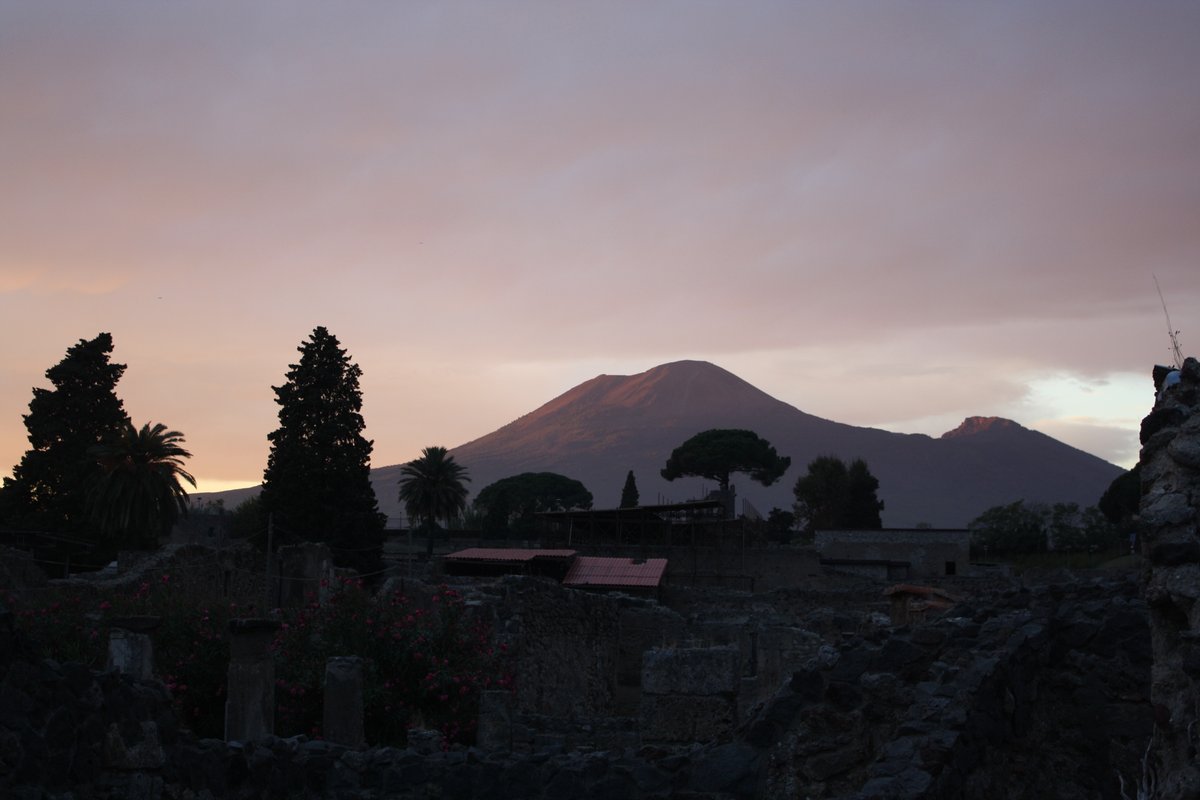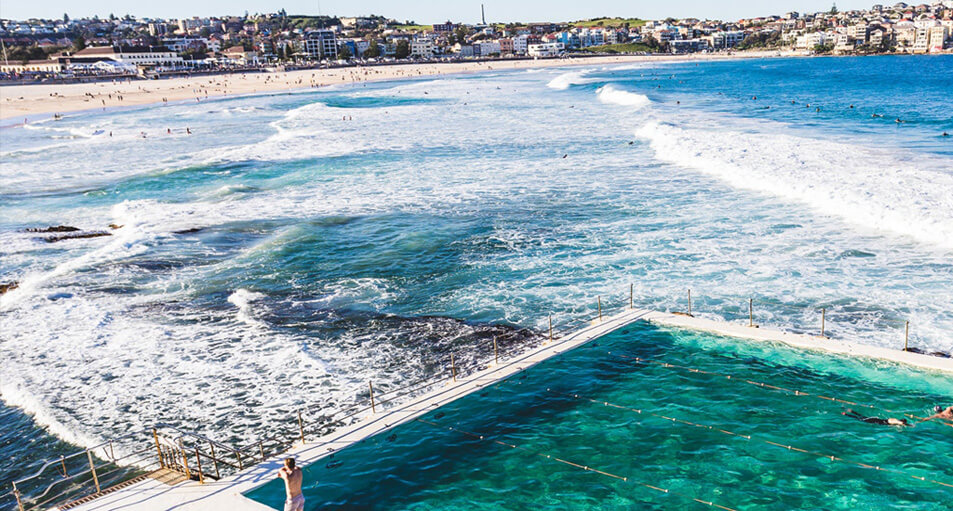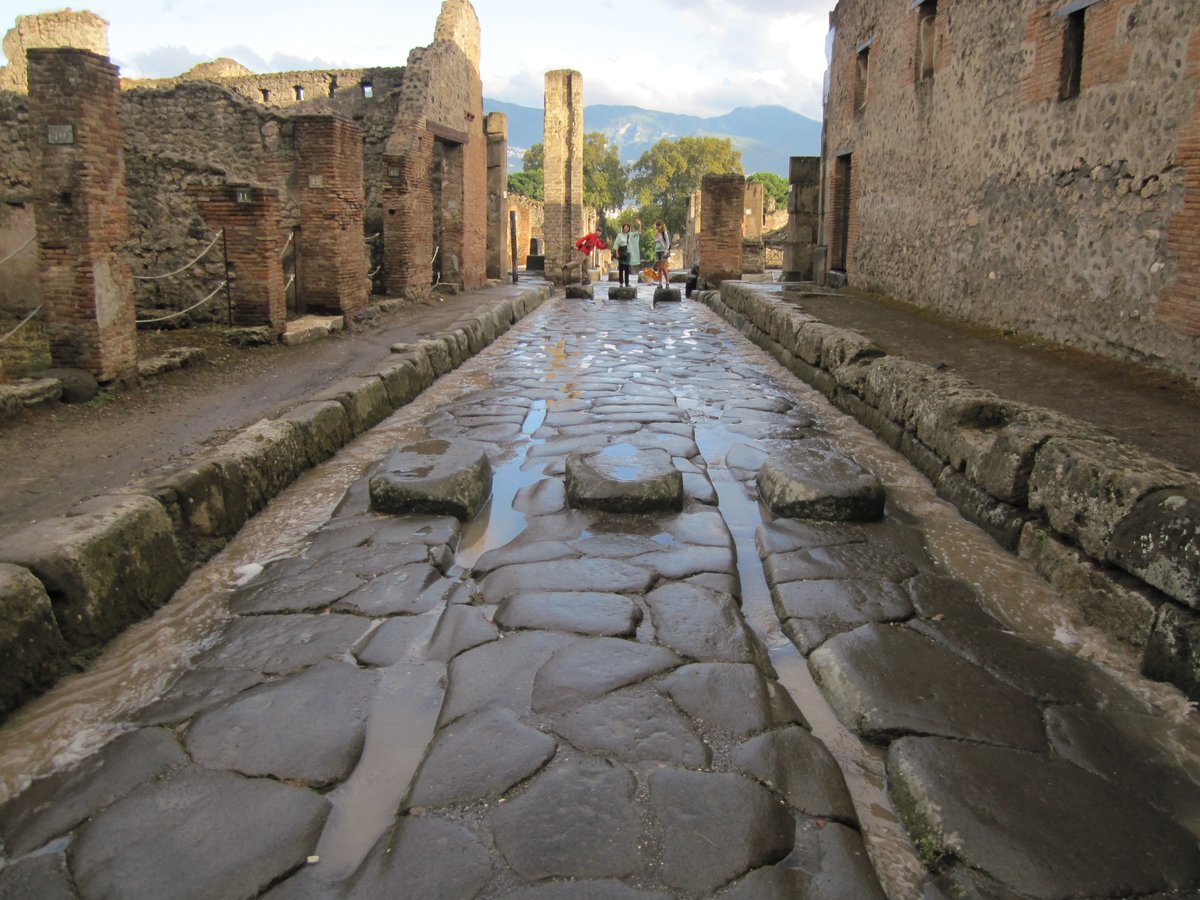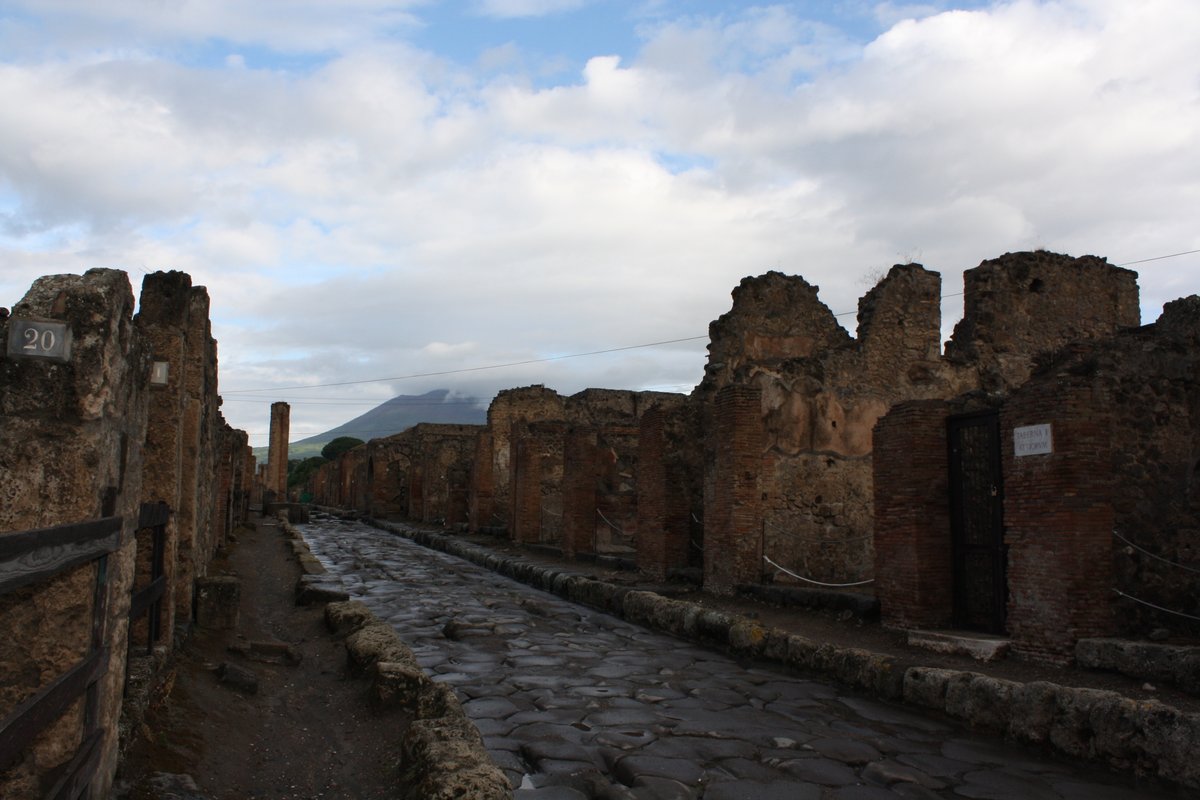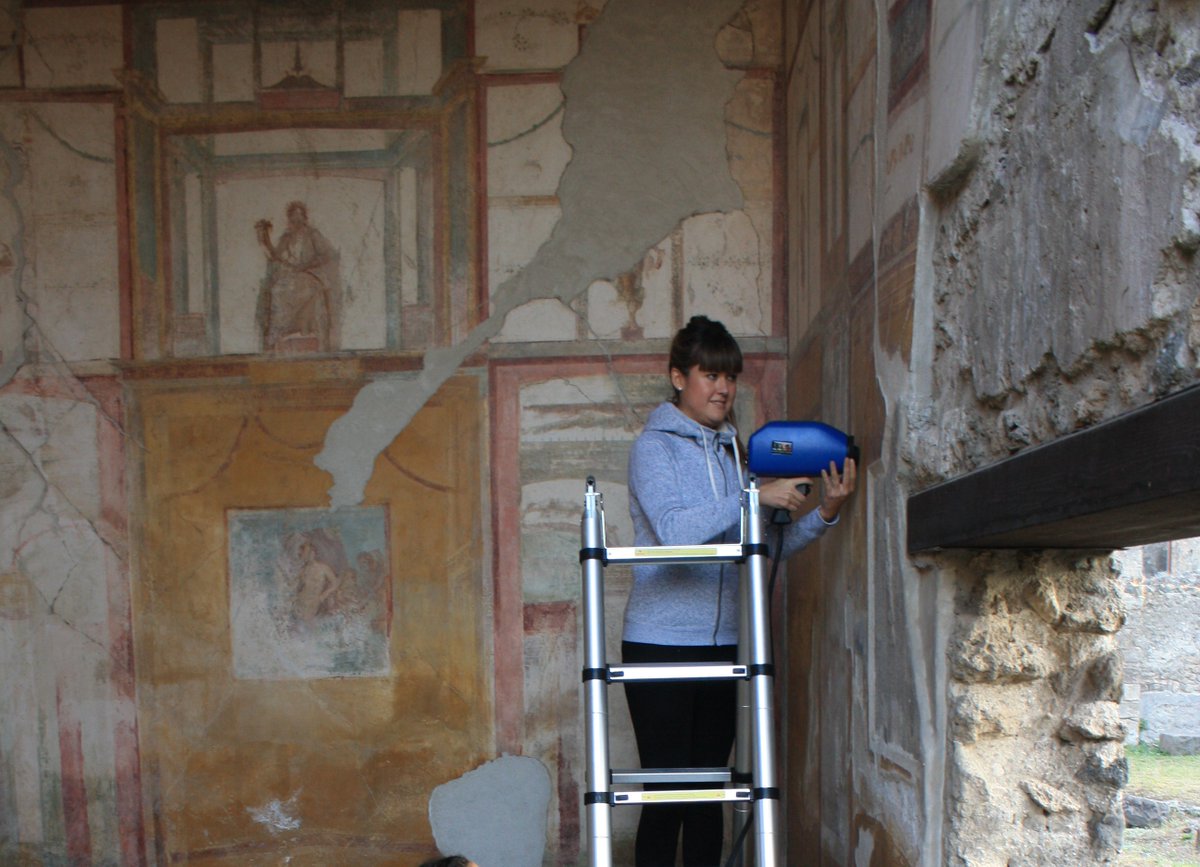You all know that Mount Vesuvius eruption covered and sealed @pompeii_sites, Herculaneum and the surrounding villas in 79 AD. But, what if I could tell you that volcanic ash and pumice could be playing a role in the deterioration of the fascinating mural paintings of the area?
The volcanic eruption froze the daily life of these cities, what allows us to study the archaeological remains of a vibrant area, in contrast with other sites that were purposefully abandoned. https://twitter.com/Carla_Ardis/status/1277568268849602560">https://twitter.com/Carla_Ard...
Some interesting findings, other than charred figs and walnuts, are pigment pots, ready to be used to renovate the houses’ decoration, affected by the 62 AD earthquake. https://twitter.com/MuseoBoscoreale/status/1258315926799351809">https://twitter.com/MuseoBosc...
In these pictures by @pompei79 you can have a look at the pigments at their original pots. In fact, the House of the Painters at work owes its name to the fact that many of the painted walls remained unfinished due to the eruption. https://twitter.com/pompei79/status/1268531902518038531">https://twitter.com/pompei79/...
The accumulation of a several meter-thick layer of volcanic ashes and pumice hindered looter activities, although it could not completely preclude it (see the hole opened through this wall). However, it also hampered the first archaeological works. https://twitter.com/EnvGeogSpeaker/status/783303719542718465">https://twitter.com/EnvGeogSp...
In fact, during the Bourbon excavations, vertical shafts were dug in Herculaneum and the most outstanding objects were taken out. After that, horizontal tunnels were excavated without a proper plan nor a scientific approach. https://twitter.com/Caroline_Barron/status/1098213047255076864">https://twitter.com/Caroline_...
Volcanic materials not only hinder the excavation processes, which are now rigorously planned, but can also be a source of salts that deteriorate mural paintings and eventually cause pictorial layer losses. https://twitter.com/pompei79/status/975995208180563970">https://twitter.com/pompei79/...
We have been able to conclude this thanks to a study performed on volcanic ashes and pumice, sampled in 5 locations at @pompeii_sites, since the accumulation of volcanic materials was not homogeneous. https://twitter.com/pompeii_sites/status/1281167939610312706">https://twitter.com/pompeii_s...
As I have already told in previous #threads, we work with portable instruments that allow us to perform in-situ chemical analysis at @pompeii_sites. One of these techniques is called LIBS: Laser Induced Breakdown Spectroscopy. https://twitter.com/cinnabarim/status/1261697150116941824">https://twitter.com/cinnabari...
Let’s explain what this means. This instrument employs a laser that “breaks down” a little tiny part of the surface under study and excited the chemical elements in a plasma, so the emissions of their atoms and ions - and sometimes a combination of the above - can be detected.
This last point is crucial for our study, since we have taken advantage of the ubiquitousness of calcium in both the ashes and the paintings to track the recombination of calcium with chlorine and fluorine in the plasma. https://twitter.com/Oskar_KimikArte/status/1115150537219919872">https://twitter.com/Oskar_Kim...
This simplifies the detection of chlorine and fluorine, taking into account that their atomic emissions are much weaker and more difficult to detect with a portable field instrument. But, why on earth it is important to track chlorine and fluorine at @pompeii_sites?
Seawater is the main natural source of chlorine - which is obviously abundant near Pompeii. You may also know that fluorine is present in toothpaste. However, both of them are also related to volcanic emissions.
In fact, fluorine is very common in volcanic areas and there is even an endemic illness related to an excessive intake of this element, which is called fluorosis and has been studied in human remains found at Herculaneum. https://twitter.com/III_VIR/status/1059902653419929605">https://twitter.com/III_VIR/s...
In the same way that high concentrations of fluorine are pernicious for living beings, both chlorine and fluorine represent a risk for mural paintings due to a process called leaching that consists in the following:
 https://abs.twimg.com/emoji/v2/... draggable="false" alt="⤵️" title="Nach rechts zeigender Pfeil mit Krümmung nach unten" aria-label="Emoji: Nach rechts zeigender Pfeil mit Krümmung nach unten">
https://abs.twimg.com/emoji/v2/... draggable="false" alt="⤵️" title="Nach rechts zeigender Pfeil mit Krümmung nach unten" aria-label="Emoji: Nach rechts zeigender Pfeil mit Krümmung nach unten"> https://abs.twimg.com/emoji/v2/... draggable="false" alt="⤵️" title="Nach rechts zeigender Pfeil mit Krümmung nach unten" aria-label="Emoji: Nach rechts zeigender Pfeil mit Krümmung nach unten">
https://abs.twimg.com/emoji/v2/... draggable="false" alt="⤵️" title="Nach rechts zeigender Pfeil mit Krümmung nach unten" aria-label="Emoji: Nach rechts zeigender Pfeil mit Krümmung nach unten">
As we have proved in this article, rainwater and groundwater are able to dissolve fluorine and chlorine present in volcanic ashes and deposit them again on the surface of the paintings once the water evaporates.
I am sure you have seen this picture of the mural painting of Leda and the swan shortly after its excavation, still with volcanic materials. Our research has proved that rainwater would be able to dissolve and transport these ions throughout the surface. https://twitter.com/pompei79/status/1197862139907719168">https://twitter.com/pompei79/...
This process is quite typical in paintings that suffer water infiltrations, which also provoke the dissolution and subsequent precipitation of the calcite (binder of the fresco). The result is the white vertical drips that you can see in the picture. https://twitter.com/cinnabarim/status/1283784177142444034">https://twitter.com/cinnabari...
Our portable instrument has allowed us to detect fluorine and chlorine in the salts formed on the surface of the mural paintings due to these processes. https://twitter.com/cinnabarim/status/1261697182404620288">https://twitter.com/cinnabari...
This is of outmost importance, since fluorine is a very light element that “avoids” being detected by other portable instrument. As a consequence, it had never been detected before in these salts and no one was aware of the potential risk.
Even if fluorine is also present in fertilisers, its major source are volcanic emissions. Hence, its detection in the salts prove that volcanic ashes not only sealed the ancient city, but can also induce deterioration processes on the mural paintings. https://twitter.com/zwatertech/status/1204205386426806272">https://twitter.com/zwatertec...
Therefore, volcanic ashes should be correctly removed in order not to expose the materials to humidity or water infiltrations, as has already been done with the mural painting of Leda and the swan. https://twitter.com/pompeii_sites/status/1199973885803937792">https://twitter.com/pompeii_s...
Finally, as we explained in this #thread on the darkening of red cinnabar, chlorine is fairly abundant in blackened cinnabar areas. Volcanic ashes, next to seawater, cannot be discarded as potential source of this element in the Vesuvian area. https://twitter.com/cinnabarim/status/1260998135956062209">https://twitter.com/cinnabari...
Here you have the full version of our article on the role of volcanic materials at @pompeii_sites published in @angew_chem: https://onlinelibrary.wiley.com/doi/10.1002/anie.202010497">https://onlinelibrary.wiley.com/doi/10.10...

 Read on Twitter
Read on Twitter